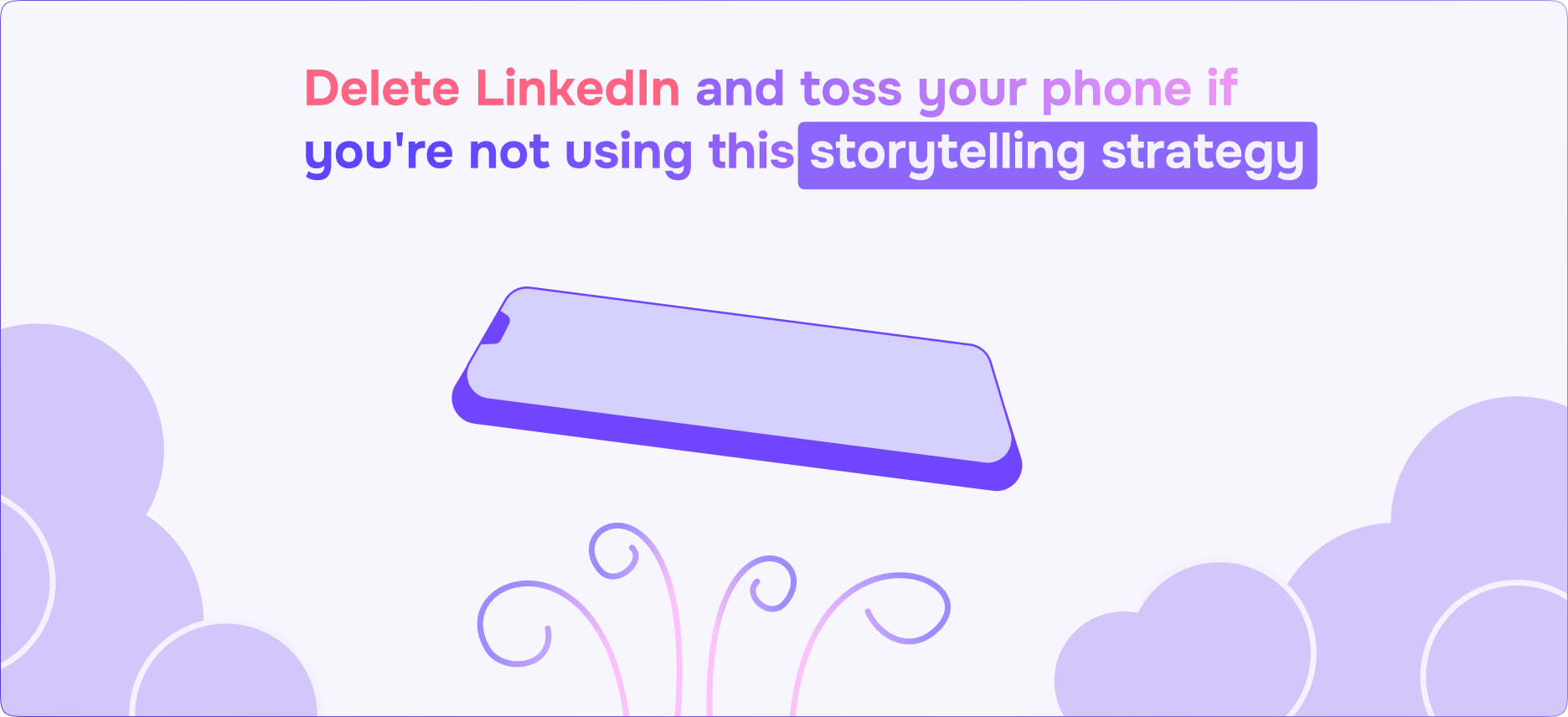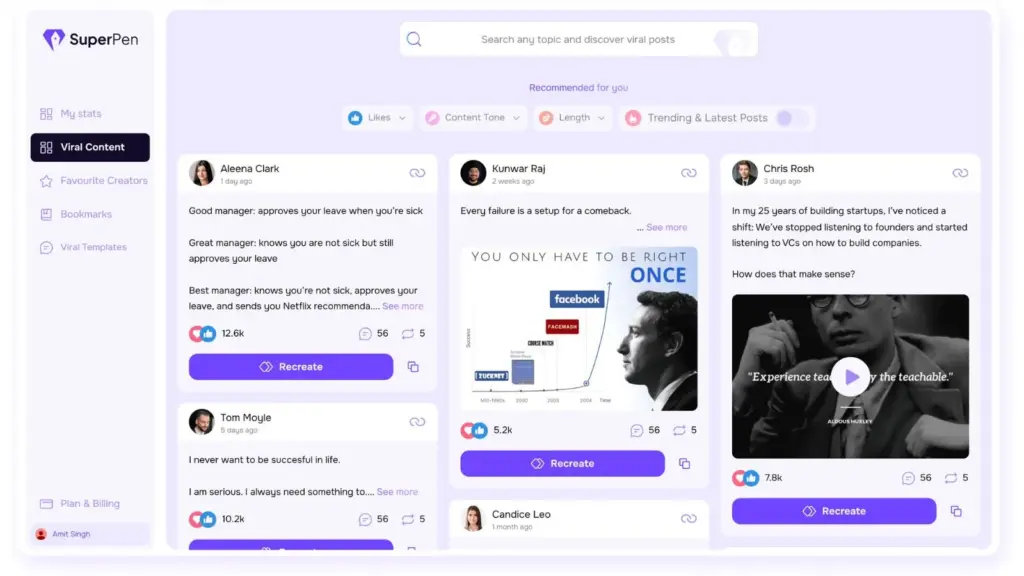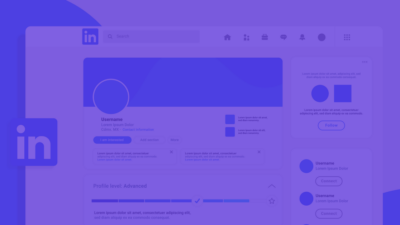You’ve started posting on LinkedIn, following all the advice like “consistency is key.” But you’re still left wondering, why isn’t it connecting with people or generating LinkedIn leads?
Trust us, we’ve all been there (it’s frustrating).
The thing is, real connection happens when you share stories that people care about, stories that make them feel seen and heard. When you open up about your own experiences and show your human side, your posts become more than just content. They carry meaning.
In this blog, we’ll walk you through five simple storytelling tactics that will help your LinkedIn posts stand out and actually grab people’s attention.
Table of Contents
1. Keep your audience in mind
One question: how can you tell a story if you don’t know who you’re talking to? Understanding your audience is the initial step in establishing a connection with them.
- Who are they?
- What do they need?
- What keeps them up at night?
When you take the time to figure this out, you’re not just creating content — you’re creating “meaningful” content.
Let’s say your audience is small business owners. What are their pain points? Maybe they’re struggling with cash flow or trying to grow their customer base.
When you know this, you can tell stories that reflect their real-life challenges. Instead of guessing what might interest them, you’re addressing their exact problems, making them feel seen and heard.
The more you dive into their world — considering their industry, job roles, and daily struggles — the better you’ll be at speaking their language.
You’re not just offering solutions; you’re offering relevant solutions. Isn’t that the kind of content you’d want to see right? Right!
2. Start your story with a Narrative Arc

Delete LinkedIn and toss your phone if you’re not using this storytelling strategy.
Does this sentence make you curious to read more? That’s the game!
Your story should grab your readers from the first line and make them want to keep going. That’s the power of a strong narrative arc. It’s like a roadmap that guides your audience through a journey — from the moment they’re hooked to the final payoff.
Start with a hook that pulls them in. Ask a question, share a surprising fact, or highlight a problem they face. Something that makes them think, “I need to know more.”
Next, introduce the main characters or the problem at hand. What’s the challenge your audience is facing? Maybe it’s a business struggling with low sales or a leader dealing with a disengaged team. As you build up the tension, show them the stakes — why solving this problem matters.
Then comes the middle, LinkedIn where the suspense grows. How will this problem be solved? This is where you guide your audience through possible solutions or steps, keeping them curious and invested.
Finally, deliver a satisfying conclusion. Whether it’s a success story, a lesson learned, or a new perspective, make sure your audience walks away feeling like they’ve gained something valuable. Think of it as tying a bow on the story — wouldn’t you want that sense of closure and reward?

By using this structure, you’re not just sharing information; you’re telling a story that keeps them hooked from beginning to end.
3. Be vulnerable (uncomfortable but powerful)
When was the last time you connected with someone because they were real with you? Authenticity does that — it breaks down walls and builds trust.
When you show your true self, flaws, and all, people relate to you more. Why? Because they see you as a real person, not someone just trying to impress or sell them something.
Share your personal experiences. Maybe you’ve faced a setback in your business or struggled to find a balance between work and life. Talk about it. Let your audience know that you’ve been there too.
For example, “I remember a time when I felt completely stuck, unsure of the next move for my business.” By opening up about your own challenges, you show that you understand theirs.
It says, “I don’t have all the answers, and that’s okay.” People don’t expect perfection — they want someone they can relate to. And when you share the lessons you’ve learned from your mistakes, you’re not just telling them what to do, you’re showing them how you’ve walked the path.
So, next time you create content, ask yourself: Am I being real? Am I sharing my story in a way that connects on a human level? Because when you are, your audience won’t just listen — they’ll feel like they’re part of your journey too.
4. Leverage Visual Elements [infographics, memes, GIFs, & more]
Visuals instantly grab attention and make your story stand out. But it’s not just about adding any image. The key is to use visuals that enhance your story, making it more engaging and easier to remember.
Let’s say you’re sharing a story about overcoming a tough business challenge. A before-and-after infographic could visually show the impact of your solution, making the story more concrete for your audience.
- When choosing visuals, make sure they’re high-quality and relevant.
- A random stock photo won’t do the trick.
- Ask yourself: Does this image or video add meaning to my message?
For example, if you’re talking about growth, a graph showing key metrics or a short video of your team celebrating a milestone can make your story come alive.
You don’t need to be a design expert. Even a simple visual, like a chart or a well-chosen image, can make a huge difference. Remember, it’s not just about telling your audience a story — it’s about helping them see it too. So, what visuals will you use to take your storytelling to the next level?
5. Give your audience the next step!
Once you’ve captured your audience’s attention and brought them along on your journey, don’t leave them hanging — guide them on what to do next. That’s where a strong Call to Action (CTA) comes in.
If you’ve just shared a story that resonates with someone, they’re likely feeling inspired, curious, or ready to take action. Don’t let that momentum go to waste. A clear, direct CTA can turn that feeling into engagement or even leads.
For example, if you’re sharing a personal story about overcoming a challenge in your business, why not invite your audience to share their own struggles in the comments? Or, if you’ve just offered valuable insights, ask them to visit your website for more tips or resources.
Make your CTA simple and actionable: “Want more tips like this? Subscribe to our newsletter,” or “What’s the biggest challenge you’re facing? Share it below!”
(you can also guide them toward downloading a resource, signing up for a demo, or scheduling a call — whatever aligns with your goals)
Remember, your story shouldn’t just inform. It should inspire your audience to act. Make sure your CTA leaves no room for doubt.
Enhance Your Storytelling with SuperPen

SuperPen is an AI-powered platform designed to assist professionals in creating impactful LinkedIn content. It offers features that align with the storytelling tactics discussed:
- Audience-Centric Content: By analyzing your target audience, SuperPen helps tailor your stories to address their specific needs and interests, ensuring your content resonates deeply.
- Narrative Structuring: SuperPen provides guidance on crafting a compelling narrative arc, from creating an engaging hook to delivering a satisfying conclusion, keeping your readers invested throughout.
- Authentic Expression: Encouraging vulnerability, SuperPen assists in sharing personal experiences authentically, helping to build trust and relatability with your audience.
- Visual Integration: Understanding the power of visuals, SuperPen suggests appropriate visual elements to complement your stories, enhancing engagement and retention.
- Effective Call-to-Actions: SuperPen aids in formulating clear and compelling CTAs, guiding your audience toward meaningful interactions and further engagement.
By leveraging SuperPen, you can overcome common challenges in content creation, such as idea generation and maintaining consistency. This tool not only aids in crafting compelling stories but also ensures they resonate with your target audience, effectively enhancing your personal brand on LinkedIn.
Integrating SuperPen into your LinkedIn strategy can streamline your content creation process, allowing you to focus on building meaningful connections and advancing your professional goals.





